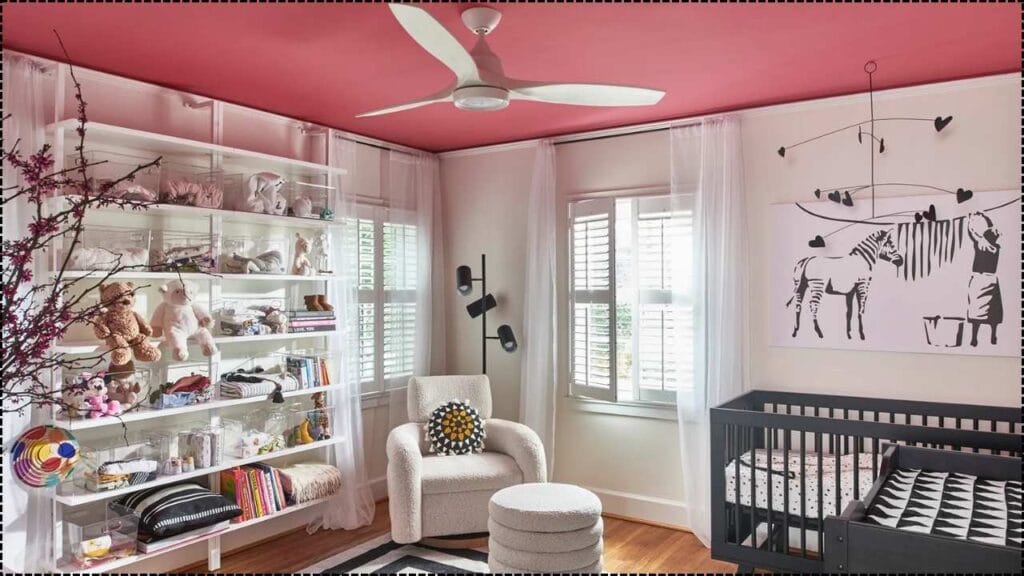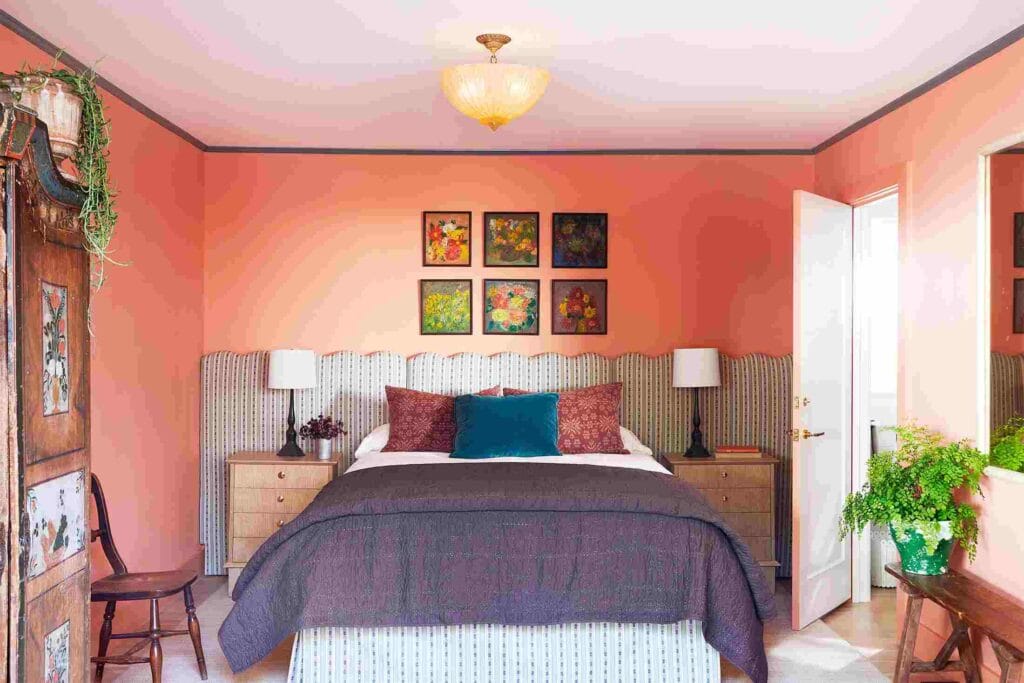Imagine arriving home on a scorching summer day to find your house gently glowing a pale white, lovingly reflecting the sun’s heat to keep your family cool and comfortable. Then, envision those same walls softly darkening in winter, embracing warmth to save energy and wrap your home in cozy care. This isn’t just a clever idea—it’s the heart of future building design, thoughtfully crafted to nurture both people and the planet. And the best part?

This sustainable, compassionate innovation is already here, ready to make homes kinder and more welcoming. New smart coating technology will let your house change color automatically with the environment—using temperature, light, and even moisture to react and adapt like something alive. It’s energy-efficient, futuristic, and surprisingly natural.
Let Your House Change Color Automatically
| Feature | Details |
|---|---|
| Core Technology | Thermochromic, photochromic, hydrochromic, and electrochromic coatings |
| Function | Shifts color based on temperature, light, humidity, or electric current |
| Energy Savings | Reduces HVAC use by 20–30% annually |
| Nature-Inspired | Mimics animals like the chameleon or Arctic fox—natural adaptation |
| Application | Home exteriors, roofs, windows, urban infrastructure |
| Durability | Typically lasts 5–10 years depending on exposure |
| Eco-Friendly? | Yes—low VOC, recyclable, contributes to LEED & green certifications |
| Key Developers | Joe Doucet (NY designer), Northeastern University, smart material labs worldwide |
| Official Resource | Northeastern University News |
This isn’t just paint. It’s a living skin for your home—learning from the world around it, shifting with the seasons, and saving you money in the process. For thousands of years, Indigenous people understood that buildings and beings alike thrive when in harmony with the land. Today’s smart coatings bring that wisdom into the modern world.
So if you’re dreaming of a home that thinks for itself—start with the walls that can change like the wind.

Nature Already Knows the Trick
In Native American storytelling, the Earth is always teaching—if we just listen. Creatures like the Arctic fox or the desert lizard change color with the seasons for survival. They adapt in harmony with their environment.
These new smart coatings do the same. They’re built to respond instead of resist—offering comfort, balance, and savings.
Breaking Down the Science—How Smart Coatings Work
Smart coatings are made with reactive compounds that change their physical properties—mostly color—when exposed to certain environmental triggers. Here’s the breakdown:
Thermochromic (Temp-Based)
- Reacts to heat or cold
- Turns light in heat to reflect, dark in cold to absorb
- Ideal for walls, siding, and roofing
Photochromic (Light-Based)
- Shifts color when exposed to sunlight or UV rays
- Great for areas with intense direct sunlight
Hydrochromic (Moisture-Based)
- Changes transparency or color when exposed to humidity or rain
- Used in walls or glass for water-triggered effects
Electrochromic (Electric-Based)
- Responds to electric signals (common in smart windows)
- Controlled tinting at the press of a button
Benefits of Color-Changing Homes
1. Automatic Climate Control
Instead of adjusting your thermostat, your walls help manage your indoor comfort—passively.
2. Energy Bill Savings
Reduces HVAC energy demand by up to 30% annually depending on region and structure (Berkeley Lab).
3. Eco-Friendly Living
Using less energy means fewer emissions. Smart coatings also tend to be low-VOC and recyclable.
4. Built-In Monitoring
Advanced versions even signal surface damage, stress, or mold through color shifts—acting like a visual health monitor for your house.
Where You Can Use Smart Coating
| Location | Benefit |
|---|---|
| Exterior Walls | Seasonally adaptive; curb appeal with function |
| Roof Shingles | Cuts summer cooling load by reflecting heat |
| Garage Doors | Front-facing areas absorb/reflect depending on time of day |
| Windows (Smart Glass) | UV tinting, privacy control, reduced heat gain |
| Urban Infrastructure | Bridges, signage, and roads with adaptive safety benefits |
Let Your House Change Color Automatically Get Started—A Step-by-Step Guide
- Know Your Climate: If you’re in the South or Midwest (Texas, Arizona, Kansas), you’ll see strong benefits from reflective color shifts. Northern climates benefit from absorptive designs.
- Pick Your Coating Type:
- Thermochromic: Best for energy savings
- Photochromic: For UV protection & fade control
- Hydrochromic: Ideal in rainy zones
- Electrochromic: Good for smart glass & privacy
- Hire a Certified Installer: Smart coatings require proper surface prep, base primer, and controlled application. DIY kits exist, but professional installation ensures long-term performance.
- Register for Green Building Credits: Many smart coatings qualify for LEED, Energy Star, or city-level sustainability incentives.
Big City, Smart Future—Urban Applications
Smart coatings are being tested in smart cities like:
- Los Angeles – To fight urban heat islands
- New York – For reflective rooftops in brownstones
- Phoenix – Testing hydrochromic walls for monsoon season
- Singapore – Using climate-reactive paint on highways
This tech isn’t just for homes—it’s reshaping how cities cool themselves, saving millions in energy and maintenance costs.
Challenges to Watch Out For
No tech is perfect. Here’s what to know before you invest:
| Challenge | Solution |
|---|---|
| Cost is higher upfront | ROI within 3–5 years via energy savings |
| UV degradation over time | Use UV-resistant topcoats and reapply every 7–10 years |
| Not widely available | Ask local green builders or check regional pilot programs |
| Fewer color options | Expect function-first choices like whites, greys, bronzes |
Who’s Leading This Innovation?
- Joe Doucet – NY-based designer whose thermochromic facade can cut HVAC demand by 30%
- Northeastern University – Their “materials with memory” project explores how pigments can learn from weather patterns
- View, Inc. – Makers of dynamic smart glass now used in over 700 buildings globally
- Synestia Labs – Start-up blending color science with architectural materials
Related Links
Walmart Rolls Out Major Update to U.S. Stores to Streamline Checkout Experience
Well-Known Frozen Pizza Brand Files for Bankruptcy and Ends Operations
Changing Shopping Habits Impact Amazon and Walmart, Leading to Significant Revenue Shifts
Career & Industry Opportunities
This trend opens the door to exciting professions:
| Career | What You Do |
|---|---|
| Sustainable Architect | Design buildings that “breathe” with the climate |
| Green Builder | Apply and maintain smart coatings professionally |
| Materials Researcher | Develop more responsive, cheaper, longer-lasting coatings |
| Urban Planner | Use smart materials in energy-smart cities |
| Home Energy Auditor | Evaluate the return on passive tech investments |
FAQs
Q: Can my home change to fun colors like blue or green?
A: Most current coatings stick to neutral shifts (light gray to black, white to beige). Fun colors are in the lab stage—but stay tuned!
Q: Is it safe for kids and pets?
A: Yes. Most are non-toxic and VOC-compliant, but always check the datasheet before application.
Q: Will my home always be changing color?
A: No, only when triggered by temp/light thresholds. The shift is gradual—not a disco show.
Q: Can I paint over it later?
A: Yes, but doing so removes the smart function unless a compatible product is used.








